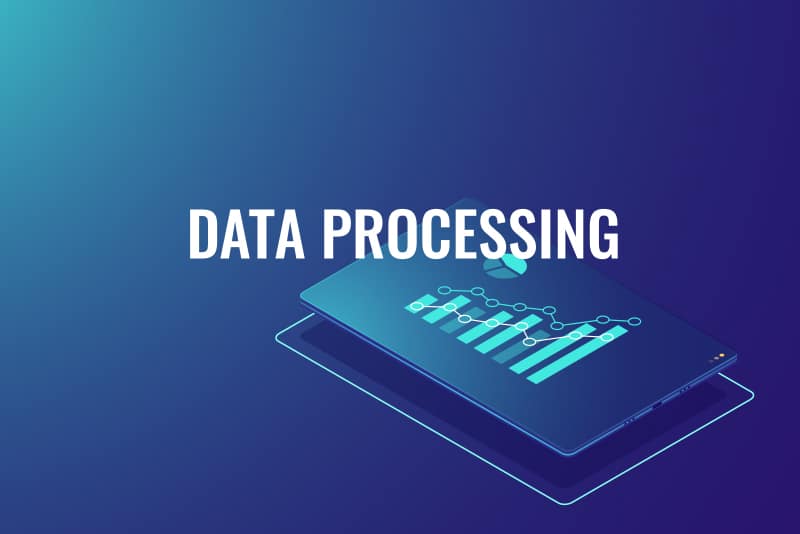International Data Corporation (IDC) projects that by 2025, fresh data generation will have increased by 61% from 2019 levels to reach 175 zettabytes. According to this analysis, between 80 and 90 percent of this data is unstructured, making it difficult for machines to understand or analyze and of little use to businesses. Organizations will need to adopt new technologies and procedures to fully utilize their data and use it to improve decision-making, drive profitability, increase efficiency, and improve the customer experience as the amount of unstructured data is predicted to increase in the coming years. When this happens, data processing services can assist the organization by implementing tools like Optical Character Recognition (OCR) and Robotic Process Automation (RPA) to convert unstructured data into structured data.
Importance of Using OCR and RPA Together
OCR is a data analytics tool that decodes and transforms unstructured data into structured data so that it may be read, analyzed, or altered by machines. It does this using artificial intelligence (AI) and machine learning (ML). On the other hand, RPA is a technology that allows users to automate repetitive and recurring processes more quickly and accurately by mimicking human behavior.
For unstructured data to be useful to a business, it must be examined, organized, preserved, and re-entered into various systems. These procedures used to be carried out manually, which added a great deal of time and expense as well as the risk of human error. Organizations can automate data activities such as data capture, data input, analysis, sorting, uploading, insight generating, and editing by combining RPA with OCR, two complementary technologies.
In every effective robotic process automation (RPA) solution, optical character recognition (OCR) is a crucial component. OCR, or optical character recognition, is a technique for mechanically or electronically extracting text from photographs and documents. It examines the patterns that make up letters and numbers to enable text recognition and conversion into an editable, organized format. RPA technology, on the other hand, automates the processes that go before and after text recognition, such as document scanning, saving, and uploading to various tools and systems.The information obtained by the OCR and RPA systems may be transformed and used to produce insights that can help with decision-making, increase productivity and efficiency, pinpoint pain points, and more.
How OCR and RPA Work in Three Different Steps
Step 1: Preparing documents
- After being scanned, the document is uploaded to the OCR tool.
- The program gets the files ready for processing, which includes resolving any problems that would prevent data extraction, like the requirement to clean, smooth, or align the scanned page.
- In order to increase the tool’s accuracy, the text is then reduced to merely black and white hues.
Step 2: Recognition of Text
- OCR technology recognizes patterns in bright and dark hues as well as the lines and curves that make up numbers and characters in different fonts, which allows it to read the text.
- These patterns are subjected to intelligent character recognition rules so the system can match them to the relevant letter or number.
- The OCR software will cross-reference saved text dictionaries in the system to guarantee the best level of accuracy.
Step 3: Extraction of data
- The OCR tool creates a final digital document that is completely editable, searchable, and structured throughout.
- If the OCR and RPA tool is coupled with an intelligent document processing (IDP) system or another cutting-edge tool, insights from this data may be automatically used to support downstream activity, such as processing claims, registering clients, producing documents, invoicing, or compliance.
Advantages of Using OCR in RPA
OCR and RPA are two essential technologies that businesses require in order to harness the power of their data and implement it to business processes in order to improve their effectiveness and efficiency. OCR and RPA together offer enterprises a wide range of advantages:
- Accuracy: Working with growing quantities of complex, unstructured data can make traditional data processing and analysis more prone to human error and misunderstanding. OCR and RPA significantly eliminate mistakes and incorrect data interpretation, and they also provide information back to human users in an intuitive manner.
- Speed: Automation drastically cuts down on the amount of time needed to recognize, extract, analyze, and arrange data. OCR and RPA eliminate a lot of the manual effort that slows down businesses and keeps important knowledge and insights hidden in their data.
- Increased client satisfaction: Higher levels of personalization and customization are possible due to faster, more accurate data processing, which also supports a greater consumer experience. For instance, some RPA and OCR software solutions can translate text into foreign languages, which helps enhance customer satisfaction in various markets and regions.
- Accessibility: People who are blind or visually challenged will benefit from OCR software’s ability to transform text into speech, increasing accessibility. Text-to-speech conversion can increase productivity by enabling any user to passively ingest information in addition to fostering a more inclusive user experience.
- Optimization of resources: OCR and RPA technologies perform repetitive and frequently boring activities including data entry, formatting, and editing with little to no human involvement. This allows employees to concentrate on higher-value tasks, lowers total costs, and operating expenses for the company.
- Value progressively: OCR and RPA improve in accuracy and efficacy over time as the ML models and algorithms get smarter, just like any AI- or ML-enabled product does. This enhances economic value and makes it possible for enterprises to leverage technology to handle more difficult jobs and open up new use cases.
The majority of medium-sized and large businesses seek to use big data, automate, and digitize their business processes. The cost and difficulty of storing and analyzing scanned documents are the main challenges in the way of achieving this goal. Even in today’s digital environment, the majority of businesses still process significant volumes of paper documents, such as invoices, without having access to digital versions.
RPA OCR can help in this situation. The time-consuming procedures involved in manually converting these invoices into legible data can be automated by an OCR engine operating with and within the RPA platform. When necessary, a sophisticated OCR system can seamlessly switch between totally robotic and human-supported input. This allows it to be fully integrated into the workflow of complicated business process automations. Advanced OCR can identify “suspicious data;” therefore any data that has to be checked will be delivered to a person via a call-out screen through an attended process automation, who will review it and, if necessary, make any corrections. After that, the system will receive the updated or confirmed data, completing the automation.
Streamline your business operations with our data processing services!
To make conversion of unstructured data into structured data easier, businesses can rely on data processing services that use OCR and RPA by enabling accurate data extraction, validation, transformation, and integration. By leveraging these services, organizations can enhance the efficiency and effectiveness of their OCR and RPA implementations, leading to improved data-driven processes and decision-making.




